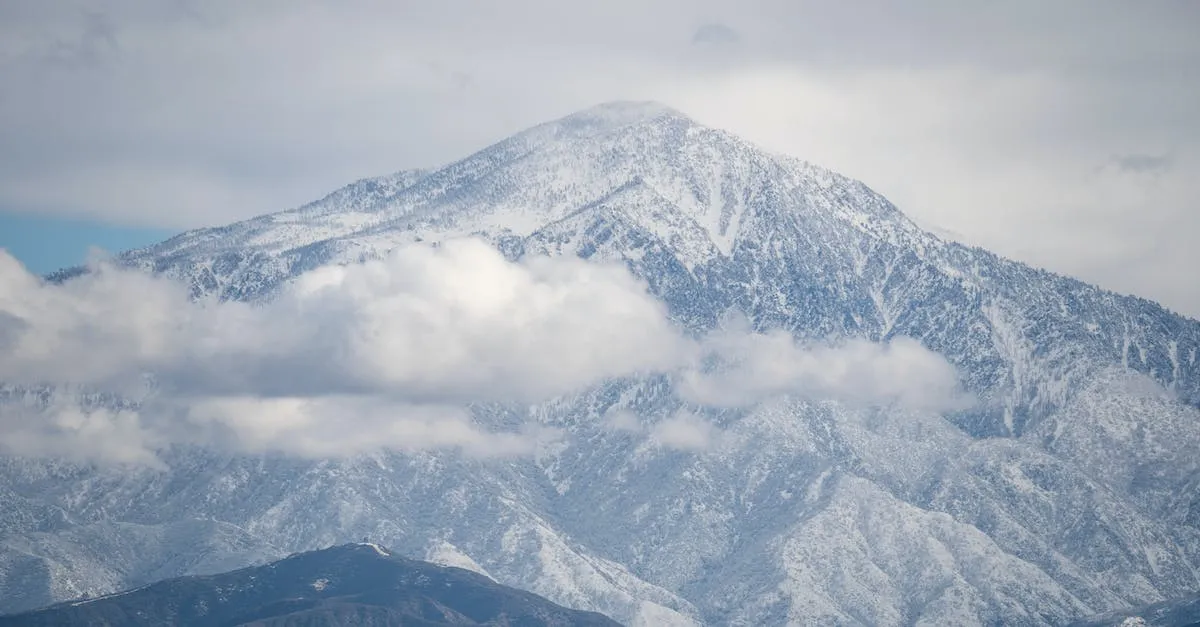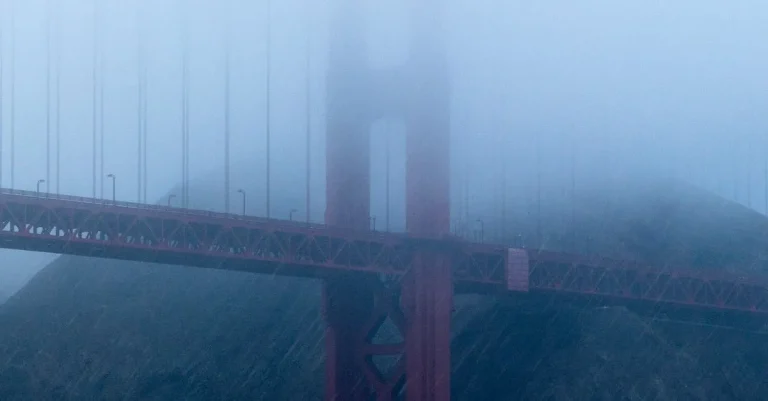Where Does It Snow In California? A Detailed Look At California’S Snowy Regions
If you’re short on time, here’s a quick answer to your question: Snowfall in California is mostly limited to the high elevations in the Sierra Nevada mountains, though occasionally some light snow reaches the coastal mountains and inland valleys.
California is known for its sunny weather and iconic beaches, but the state does get snowfall every winter – if you know where to look. In this comprehensive guide, we’ll explore exactly where you can find snow in the Golden State, from the highest peaks to the rare dustings that reach sea level.
The Sierra Nevada Mountains
The Sierra Nevada Mountains in California are a prime destination for snow enthusiasts. Known for their breathtaking beauty and abundant snowfall, this mountain range offers a variety of winter activities for visitors of all ages.
From skiing and snowboarding to snowshoeing and snowmobiling, there is something for everyone to enjoy.
Lake Tahoe
One of the most popular snow destinations in California is Lake Tahoe. Nestled in the Sierra Nevada Mountains, Lake Tahoe is famous for its crystal-clear waters and stunning alpine scenery. During the winter months, this area transforms into a winter wonderland, with an average snowfall of over 300 inches.
Ski resorts such as Heavenly, Northstar, and Squaw Valley offer world-class slopes and amenities for skiers and snowboarders of all skill levels. Visitors can also enjoy snowshoeing, ice skating, and snowmobiling in the surrounding areas.
Yosemite National Park
Yosemite National Park, known for its majestic granite cliffs and towering waterfalls, is not only a summer destination but also a winter paradise. When winter arrives, the park is transformed into a snowy wonderland, offering breathtaking views and a range of winter activities.
Visitors can explore the park’s snowy trails on snowshoes or cross-country skis, or even try their hand at ice climbing on frozen waterfalls. The iconic Yosemite Valley, with its snow-covered granite monoliths, is a sight to behold during the winter months.
Mammoth Mountain Ski Area
Mammoth Mountain Ski Area, located in the Eastern Sierra Nevada range, is a premier winter destination in California. With an average annual snowfall of over 400 inches, Mammoth Mountain offers great skiing and snowboarding conditions from early November to June.
The ski area boasts over 3,500 acres of skiable terrain, including wide-open bowls, steep chutes, and perfectly groomed trails. In addition to skiing and snowboarding, visitors can enjoy snow tubing, snowmobiling, and even take a scenic gondola ride to enjoy panoramic views of the surrounding snow-covered peaks.
When planning a trip to the Sierra Nevada Mountains, it’s important to check weather and road conditions beforehand, as snowstorms can occasionally cause temporary closures or restrictions. Additionally, it’s always a good idea to pack appropriate winter gear and be prepared for changing weather conditions.
With its stunning landscapes and abundance of snow, the Sierra Nevada Mountains in California truly offer a winter experience like no other.
Coastal Mountain Ranges
California is known for its diverse geography, ranging from sunny beaches to towering mountain ranges. While many people associate California with warm weather, there are actually several regions within the state that receive a fair amount of snowfall.
One such region is the Coastal Mountain Ranges, which stretch along the western edge of the state.
Mount Shasta
One of the most prominent peaks in the Coastal Mountain Ranges is Mount Shasta. Located in Northern California, Mount Shasta is a dormant volcano that stands at an impressive height of 14,179 feet. Due to its elevation, Mount Shasta receives heavy snowfall during the winter months.
In fact, it is one of the snowiest places in California, with an average annual snowfall of over 300 inches. This makes it a popular destination for winter sports enthusiasts, who flock to the mountain to ski, snowboard, and snowshoe.
The Transverse Ranges
The Transverse Ranges, which run parallel to the California coast, also experience snowy conditions during the winter. This mountain range includes notable peaks such as Mount San Jacinto, Mount San Gorgonio, and the San Rafael Mountains.
While these mountains may not receive as much snowfall as Mount Shasta, they still offer opportunities for winter recreation. Hiking, snow camping, and cross-country skiing are popular activities in this region.
The Santa Lucia Mountains
The Santa Lucia Mountains, located along the central coast of California, are another snowy region in the state. These mountains provide a stunning backdrop to the picturesque coastal towns of Big Sur and Carmel.
While snowfall in the Santa Lucia Mountains is not as heavy as in other parts of California, it is not uncommon to see a dusting of snow on the higher peaks during the winter months. This creates a unique and beautiful contrast with the nearby ocean views.
It’s worth noting that snowfall in the Coastal Mountain Ranges can vary from year to year, depending on weather patterns and other factors. However, these regions generally experience colder temperatures and more snowfall compared to other parts of California.
So, if you’re looking to experience a winter wonderland in the Golden State, be sure to explore the snowy regions of the Coastal Mountain Ranges.
Inland Mountain Ranges
California is known for its diverse landscapes, and one of the most prominent features is its inland mountain ranges. These majestic ranges not only provide breathtaking views, but they also play a significant role in bringing snowfall to certain regions of the state.
Two notable inland mountain ranges in California are the Tehachapi Mountains and the San Gabriel Mountains.
The Tehachapi Mountains
The Tehachapi Mountains, located in southern California, are an extension of the southern Sierra Nevada range. This mountain range is known for its high peaks, such as Tehachapi Mountain, which reaches an elevation of over 7,900 feet.
The Tehachapi Mountains receive significant snowfall during the winter months, thanks to their elevation and proximity to cold air masses.
Several ski resorts are located in the Tehachapi Mountains, attracting winter sports enthusiasts from all over the state. These resorts offer a variety of activities, including skiing, snowboarding, and tubing, making it a great destination for both beginners and experienced winter sports enthusiasts.
The San Gabriel Mountains
The San Gabriel Mountains, located in Southern California, are another inland mountain range that experiences snowfall during the winter season. These mountains stretch across Los Angeles and San Bernardino counties, providing a picturesque backdrop to the bustling city below.
The San Gabriel Mountains are home to several popular ski resorts, including Mountain High and Mt. Baldy. These resorts offer a range of slopes catering to skiers of all levels, making it a great destination for families and individuals looking to enjoy the snow.
In addition to skiing and snowboarding, visitors can also engage in activities such as snowshoeing and sledding.
It’s important to note that snowfall in the Tehachapi Mountains and the San Gabriel Mountains can vary from year to year. Factors such as weather patterns and El Niño conditions can influence the amount of snowfall received in these regions.
It’s always a good idea to check the weather forecast and road conditions before planning a trip to these areas.
Rare Snowfalls at Low Elevations
While California may be known for its warm and sunny climate, there are some regions in the state that experience rare snowfalls at low elevations. These unexpected snow events add a touch of magic to the typically mild weather, creating breathtaking sights and memorable experiences for residents and visitors alike.
The Central Valley
The Central Valley, which stretches for hundreds of miles between the Coastal Ranges and the Sierra Nevada Mountains, is not typically associated with snow. However, every few years, a cold weather system can bring snowflakes to this vast agricultural region.
Cities such as Sacramento and Fresno have witnessed rare snowfalls, transforming the landscape into a winter wonderland. While these snow events are infrequent and usually short-lived, they leave a lasting impression on the communities that experience them.
The Mojave Desert
The Mojave Desert, known for its arid and desolate landscape, is another surprising location where snow occasionally falls. Places like Joshua Tree National Park and the cities of Lancaster and Palmdale have seen snowflakes dusting their iconic desert scenery.
These rare snowfalls provide a stark contrast to the usual heat and dryness of the region, allowing visitors to witness the unique beauty of a winter wonderland in an unexpected setting.
Coastal Cities
California’s coastal cities, with their moderate temperatures and ocean breezes, rarely see snow. However, there have been a few instances where these cities have been blanketed in a rare layer of white. In 1962, for example, a powerful storm brought snow to the coastal city of Santa Cruz.
More recently, in 2019, a cold front brought snow to Malibu, surprising residents and creating a picturesque scene along the usually sunny beaches. These rare snowfalls serve as a reminder that California’s weather can sometimes be full of surprises.
While these snowfalls at low elevations are rare occurrences, they remind us of the diverse and unpredictable nature of California’s climate. They also offer a unique opportunity for residents and visitors to experience the magic of snow in unexpected places.
So, keep an eye on the weather forecast and you might just get the chance to witness a rare snowfall in one of California’s usually snow-free regions!
Conclusion
While the sunny stereotype of California is certainly true for much of the state, there are still plenty of mountainous regions that reliably see snow each winter. From ski resorts in the mighty Sierra Nevada to rare dustings in Mojave cities, snowfall brings a magical touch to the Golden State when conditions are just right.
So next time you’re planning a California vacation during the colder months, consider adding a snowy adventure to your itinerary. With the comprehensive guide above, you’ll know exactly where to head for the best chance of catching a glimpse of the state’s beautiful white winters.








